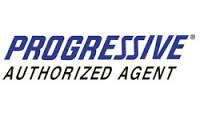“Building Ordinance or Law — 50% of Coverage A. What is “Coverage A” and what is the amount? My current policy simply identifies $5k for the coverage. How does your policy differ, if at all? Uncertain what the coverage actually is…”— S.L. (Austin, Texas) 3/18/16
* * *
What is Building Ordinance or Law on a Texas Home Insurance Policy?
Building Ordinance or Law Coverage applies whether you suffer a total or partial loss to the structure. This valuable coverage can save you thousands of dollars in upgrades that you would have to pay out of pocket. Ordinance or Law limits are usually a percentage of your Coverage A Dwelling limit. For example, if the Dwelling amount on your home is $200,000 a 50% option will allow up to $100,000 in upgrades due to building code requirements; a 25% option will allow up to $50,000 and some companies offer a flat coverage amount.
Did you know rebuilding your home to meet current codes or demolishing what is left of it might increase your costs up to 50%? Your state or city may have laws or building codes that greatly affect the reconstruction of a damaged home. These building codes change over time and they usually become more demanding. If a windstorm or other loss event damages your home, these local ordinances may increase the cost to rebuild, repair or demolish your home and add to your out-of-pocket costs. Building Ordinance or Law Coverage can help protect you from these increased costs due to new regulations.
Most homeowners policies will limit the amount of coverage for the following increased costs caused by adherence to current ordinance or law.
- The construction, remodeling, demolition, renovation or repair of a structure or building
- The reconstruction or demolition of the undamaged portion of a covered structure or building
- The removal, remodeling or replacement of the portion of the undamaged part of a structure or building needed to complete your repair
Here is an example of how the Building Ordinance or Law Coverage applies. Your home sustains damage to the roof when a tree falls into your bedroom during a windstorm. Roof repairs will probably require costlier shingle replacement and minimally, hurricane roof straps or specific size roof nails. These more expensive items will add significant costs to your repair bill. Building Ordinance or Law Coverage pays for those costs, which insurance carriers would otherwise consider an improvement to your property absent the coverage. Without this endorsement, you must pay the additional costs. Add these costs to your deductible and you can see why this coverage can be critical to your budget.
As safety research grows, building codes reflect that new knowledge of how to make property safer and better able to withstand wind and other natural forces. The older your home, the more likely it is to have code upgrades after a loss. For example, a home built in 1990 would have had much less stringent local building codes governing your plumbing, electrical, or roof systems. To bring a 1990 home up to today’s standards would cost more than simply repairing the damage.
You don’t want to learn the hard way, after you have suffered a loss. Talk to your agent today about this important coverage. If you would like to learn more about Homeowners Insurance from Austin Insurance Group, please contact our office at 512-339-2901 or get a quote online.
.


